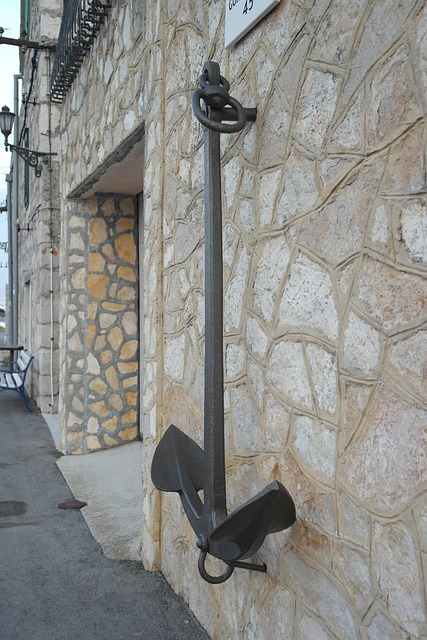Internal linking, enhanced by semantic anchor text, is a powerful tool for improving user experience and search engine optimization (SEO). By using descriptive, contextually relevant phrases as anchors, you guide users and search engines to related content, boosting rankings and organic traffic. Effective strategies include identifying key topics, creating natural-sounding anchors, diversifying choices, maintaining keyword balance, and tracking analytics metrics like CTRs, bounce rates, and session durations. Using specific keywords and precise language in active voice improves user navigation and search engine understanding, ultimately enhancing website performance through strategic internal linking and semantic anchor text optimization.
In the realm of digital content creation, internal linking is a powerful strategy to enhance user experience and boost SEO. This comprehensive guide delves into the art of optimizing long-form content through strategic internal linking. We explore the benefits, dissecting the role of semantic anchor text in enhancing readability and search engine rankings. With a step-by-step approach, learn to craft compelling anchor text, implement links effectively, and ensure a seamless user journey. Discover best practices and measurement techniques to optimize your internal link strategy, making your content a captivating symphony of information.
- Understanding Internal Linking and Its Benefits
- The Role of Semantic Anchor Text in Optimized Content
- Step-by-Step Guide to Crafting Effective Semantic Anchor Text
- Implementing Internal Links Strategically Within Long-Form Content
- Best Practices for a Seamless User Experience
- Measuring and Analyzing the Success of Your Internal Link Strategy
Understanding Internal Linking and Its Benefits

Internal linking is a powerful strategy that can significantly enhance the user experience and improve your website’s overall performance. By strategically linking relevant pages within your site, you create a network of information that allows visitors to explore related content effortlessly. This not only keeps users engaged but also provides valuable context for search engines, helping them understand your content’s relevance and structure.
One of the key advantages of internal linking is its ability to boost SEO (search engine optimization). When you use semantic anchor text, which refers to using descriptive and relevant phrases that match the target page’s content, you signal to search engines what the linked page is about. This technique optimizes for semantic anchor text SEO, ensuring your links are not just click-throughs but meaningful connections between related topics. Effective internal linking and semantic anchor text strategy can lead to improved website rankings, increased organic traffic, and a more efficient user journey.
The Role of Semantic Anchor Text in Optimized Content

In the realm of long-form content optimization, semantic anchor text plays a pivotal role in enhancing internal linking strategies. When crafting links within your content, the choice of words that act as ‘anchors’ is crucial for both user experience and search engine optimization (SEO). Semantic anchor text refers to the phrases or terms used to link back to another section within your article or website. Unlike traditional anchor texts that simply contain keywords, semantic anchors provide context by mimicking natural language queries that users might type into search engines. For instance, instead of using “click here,” consider linking with a phrase like “learn more about AI’s impact on healthcare.” This strategic approach not only improves readability but also allows search algorithms to better understand the relationship between different parts of your content.
When implementing a semantic anchor text strategy, there are several tips to keep in mind. First, ensure that the anchor text is relevant and descriptive, closely related to the target page’s content. Second, vary your anchor text choices to avoid over-optimization; use a mix of exact match keywords, partial matches, and branded terms. Lastly, monitor your internal linking structure regularly to identify opportunities for improvement and to maintain a natural flow of information throughout your optimized content. By leveraging these semantic anchor text tips, you can create a seamless user journey while boosting your SEO efforts.
Step-by-Step Guide to Crafting Effective Semantic Anchor Text

Creating effective semantic anchor text is a crucial step in optimizing your internal links for long-form content. This involves carefully crafting link anchors that convey context and relevance, enhancing both user experience and search engine understanding. Start by identifying key topics or phrases within the content you’re linking to. These should align with the intent behind the linked page, offering a clear benefit to readers. Next, use these topics as a base to create natural-sounding anchor text—a balance between keyword relevance and readability is key here.
Instead of generic links like “click here,” aim for phrases that provide context. For instance, instead of “Learn more,” consider using “Discover the impact of semantic anchor text on SEO strategies.” This approach not only guides users but also signals to search engines the topic relevance of the linked content. Remember, a well-crafted semantic anchor text tutorial should be both informative and enticing, encouraging clicks while maintaining a seamless reading experience.
Implementing Internal Links Strategically Within Long-Form Content

Implementing internal links strategically within long-form content is an art that combines user experience and SEO best practices. When crafting links, focus on using semantic anchor text that aligns with the context of your content. Semantic anchor text optimization involves selecting phrases that accurately reflect the target article’s topic, making the link relevant to both users and search engines. For instance, instead of generic links like “click here,” use specific keywords or phrases that convey the purpose of the link, such as “read more about SEO strategies” or “explore our latest insights.”
This approach not only enhances user experience by providing clear context but also helps search engines understand the relationship between your content and related resources on your site. As you integrate these links naturally throughout your long-form content, keep in mind various semantic anchor text tips. Ensure diversity in your anchor text choices, maintain a balanced distribution of keyword usage, and avoid overstuffing your links with exact match keywords. A well-planned internal linking strategy using semantic anchor text can drive traffic, improve user engagement, and contribute to better search engine rankings for your long-form content.
Best Practices for a Seamless User Experience

Creating a seamless user experience through internal linking involves employing strategic techniques that not only enhance navigation but also boost search engine optimization (SEO). When implementing internal links, focus on using semantic anchor text as a core component of your strategy. Semantic anchor text refers to the descriptive and contextually relevant words or phrases linked to a target page. This practice provides several benefits. Firstly, it offers users clear indications about the content they’ll encounter upon clicking, making navigation more intuitive. Secondly, search engines understand the relationship between pages better, which can improve crawl efficiency and indexing.
To craft effective semantic anchor text, consider using specific keywords or phrases that accurately describe the target page’s content. Avoid generic terms like “click here” or “more info.” Instead, use active voice and precise language to create a natural reading experience. For instance, instead of saying “read more,” you might link with “Explore our in-depth analysis on sustainable energy solutions.” This approach not only aids users but also aligns perfectly with best practices for semantic anchor text SEO and strategic tips for internal linking, ultimately enriching the overall user journey while strengthening your site’s search engine rankings.
Measuring and Analyzing the Success of Your Internal Link Strategy

Measuring the success of your internal linking strategy is an essential step to understand its effectiveness and make data-driven improvements. Utilize analytics tools like Google Analytics to track user behaviour, focusing on metrics such as click-through rates (CTRs), bounce rates, and average session durations for pages with internal links. By analysing these insights, you can identify high-performing and underperforming content, allowing you to refine your strategy accordingly.
When evaluating the performance of internal links, pay close attention to semantic anchor text optimization. This involves using descriptive and contextually relevant anchor text that reflects the target page’s content. For instance, instead of generic anchors like “click here,” opt for specific phrases like “read more about SEO best practices” or “check out our latest blog post on keyword optimisation.” Such strategic anchor text selection not only improves user experience but also signals search engines about the relevance and quality of your internal links, contributing to better ranking outcomes in the long run.
